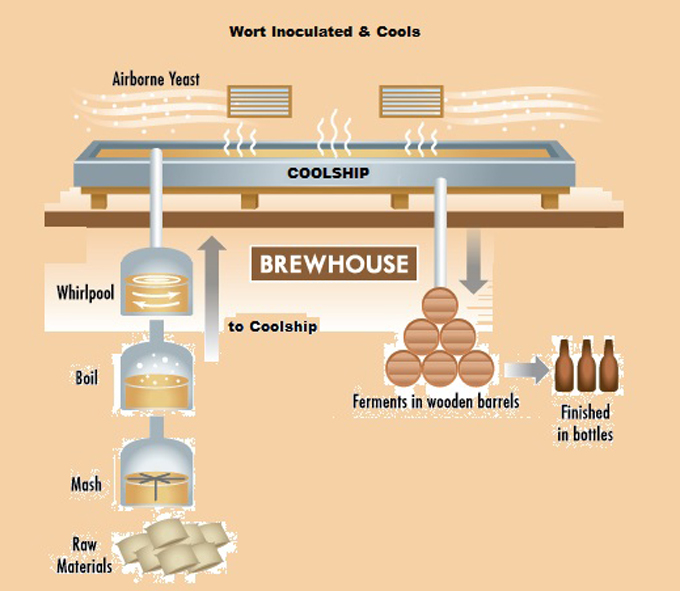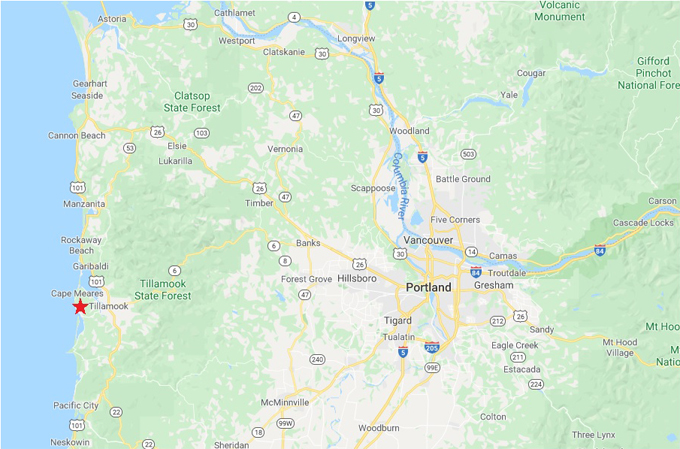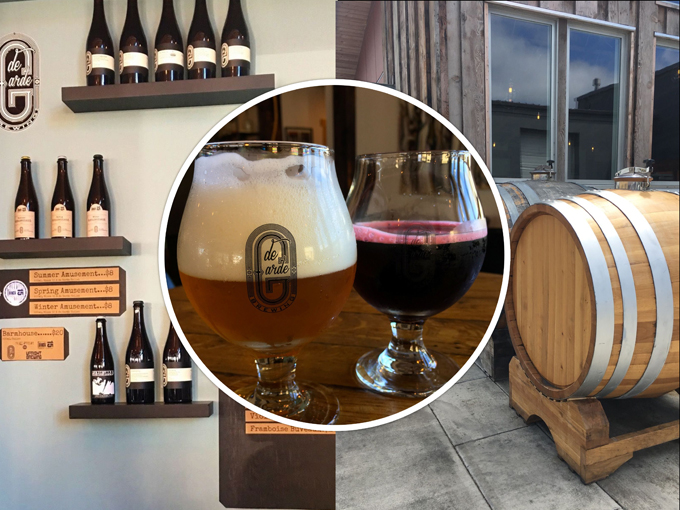de Garde Brewing
When you think of vacation hot spots, Tillamook, Oregon probably doesn’t make the top of your list. However, visiting the Pacific coast of Oregon could easily be a high priority on that vacation list. And for any beer lover, a stop in Tillamook definitely adds some wild adventure to that coastal tour. Why? Because de Garde Brewing in Tillamook specializes in spontaneously fermented or “wild” beers.
Trevor Rogers and wife Linsey (Hamacher) Rogers started de Garde Brewing in 2013. They started in their Pacific City home garage. The plan was to experiment with wild fermentation on a few beers. There are very few breweries in the U.S. that focus on spontaneous fermentation because the process is extremely temperamental. Proper environmental conditions and unique skill are essential elements to implementing quality spontaneous fermentation consistently. Making wild beers also requires a lot of time and patience. However, most breweries look for rapid product turnover. So making natural wild beers (not to be confused with kettle sours) is not pursued.
Instead of using laboratory cultured yeast, the wort for spontaneously fermented beers is cooled naturally in a long, shallow and open vessel known as a coolship. Wild airborne yeast, microflora and bacteria in the open cool air naturally inoculate the sugar rich wort to start the fermentation process. Once cooled and fermentation started, the brewer transfers the wort to oak barrels (some big, some small, some medium). Each beer takes its own time in the barrels to finish fermenting. Most of de Garde’s beers take anywhere from 6 months to 5+ years in barrels before they bottle them. And every bottle undergoes secondary fermentation prior to release.
 Making Beer through Spontaneous Fermentation
Making Beer through Spontaneous Fermentation
To determine the location for de Garde Brewing, Trevor Rogers conducted a microorganism survey by putting a dozen samples of wort along the coast, from Astoria to Newport. Rogers found the best combination of wild yeast, microflora and bacteria for spontaneous fermentation in Tillamook. Five different rivers flow out of the mountains and empty into nearby Tillamook Bay, contributing to the microorganism diversity and airborne population. In addition, Tillamook offers attractive year-round temperature and weather conditions. Hence, Rogers chose Tillamook as the site for de Garde Brewing.
 Located at the Pacific coast, Tillamook’s year-round cool climate proves perfect for spontaneous fermentation.
Located at the Pacific coast, Tillamook’s year-round cool climate proves perfect for spontaneous fermentation.
Since opening, de Garde Brewing has developed a world-wide cult following of wild beer lovers. On-premises sales account for about 95% of their bottle sales. Most of the beers at this small brewery are produced in quantities of fewer than 1,000 bottles. And they rarely sell kegs outside the tasting room. Hence, it’s not unusual for de Garde beer lovers to fly to Oregon from across the U.S. or other countries for a new bottle release.
 Best Bet – Visit de Garde Brewing’s Tasting Room for on tap beer and bottle purchases.
Best Bet – Visit de Garde Brewing’s Tasting Room for on tap beer and bottle purchases.
In an interview with Willamette Week, Linsey Rogers said: “We thought we were going to do wild beer as well as IPAs, and everything else.” We did our first batch, which was our Bu Weisse, and we just looked at each other and said, ‘Let’s just do wild, all the time. Let’s just go with this. We knew it was pretty risky, but what do you have to lose?”
It’s not easy to stand out from the crowd, but de Garde Brewing has undeniably done just that. It’s risky to base a brewery on the unpredictable art of spontaneous fermentation, but de Garde has made it work. And they are doing so in a state that has more breweries per capita than any other. Next time you visit the Oregon coast, stop by Tillamook and try de Garde’s wonderful, spontaneously fermented beers.
